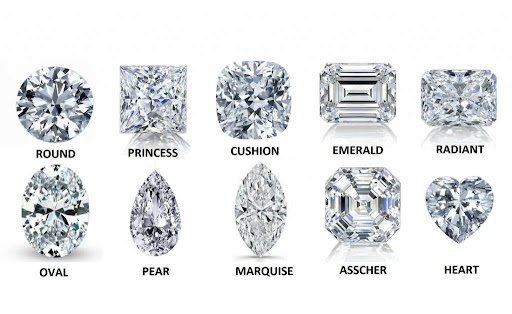3Cs, not 4Cs, are the foundation of a quality diamond purchase. Surprising? Carat weight has no bearing on the quality of a diamond's cut, clarity, or color. Quality isn't affected by size, after all. The 3Cs, fluorescence, and shape all play a role in determining the quality of a diamond.

A diamond's beauty is a result of both birth and upbringing. Diamond rough comes in many colors and inclusions. When cutting rough, the four Cs (cut, color, clarity, and carat weight) must be considered. Should the cutter remove most inclusions to get a high-clarity stone? Or should the cutter aim for maximum diamond size? As a result, the quality of a diamond is determined by both its origin and its polish. The 4Cs only measure a diamond's cut, color, and clarity. Contrary to popular belief, a small diamond can be as beautiful and well-crafted as a larger one. The cut is the only one of the four Cs that can be controlled by humans in natural diamonds.
The shape of round brilliant diamonds is easily assessed. Round brilliant diamonds should be round! A round brilliant diamond's shape is relatively uniform, especially if it has a very good or excellent cut grade.
Things get more complicated with fancy-cut diamonds. There are so many different shapes and cutting styles that GIA does not assign cut grades. A person's taste is also vital. Four things to look out for with fancy shapes:
Dimensions, design, and finish of a diamond. Angles and facets of a diamond are proportioned. Weight ratio (too much or too little weight for a diamond's diameter) (the risk of damage due to vulnerable thin areas). Polish (facet surface quality) and symmetry (the arrangement and placement of facets). These facets combine to form the diamond's cut. Cut quality determines a diamond's brightness, fire, and scintillation.
Why do radiance, fire, and scintillation count?
Brightness is the white light reflected by a diamond's facets. A diamond's spectral colors appear as fire to onlookers. The diamond's sparkle and pattern of light and dark areas are seen when moved.
This trio helps a diamond shine.
The GIA can grade round brilliant diamonds but not fancy cut diamonds. Here's how to check your diamond's cut quality whether it has a cut grade or not:
Except for very rare fancy white diamonds, most “white” diamonds are colorless. Most colorless diamonds have hints of yellow, gray, or brown. That's why the GIA created a D-to-Z color grading scale to show how much color a diamond has.
People prefer diamonds with the least amount of color. Only D diamonds are colorless. Except when side-by-side compared to a diamond of much higher color grade. Aside from the color grade, two other factors impact a diamond's color:
Sell your diamonds with ease with Diamond Registry’s comprehensive approach and vast global industry connections to help you find the best buyer for your diamond fast. Visit www.diamondregistry.com/sell-your-ring to take your first step to fast, easy and reliable way of selling your diamond.
Want to check and calculate diamond per carat instantly? Go to DR’s diamond price calculator www.diamondregistry.com/diamond-price-list/#calc-move-to to know how. Reliable and trusted carat calculator in the diamond industry since!

